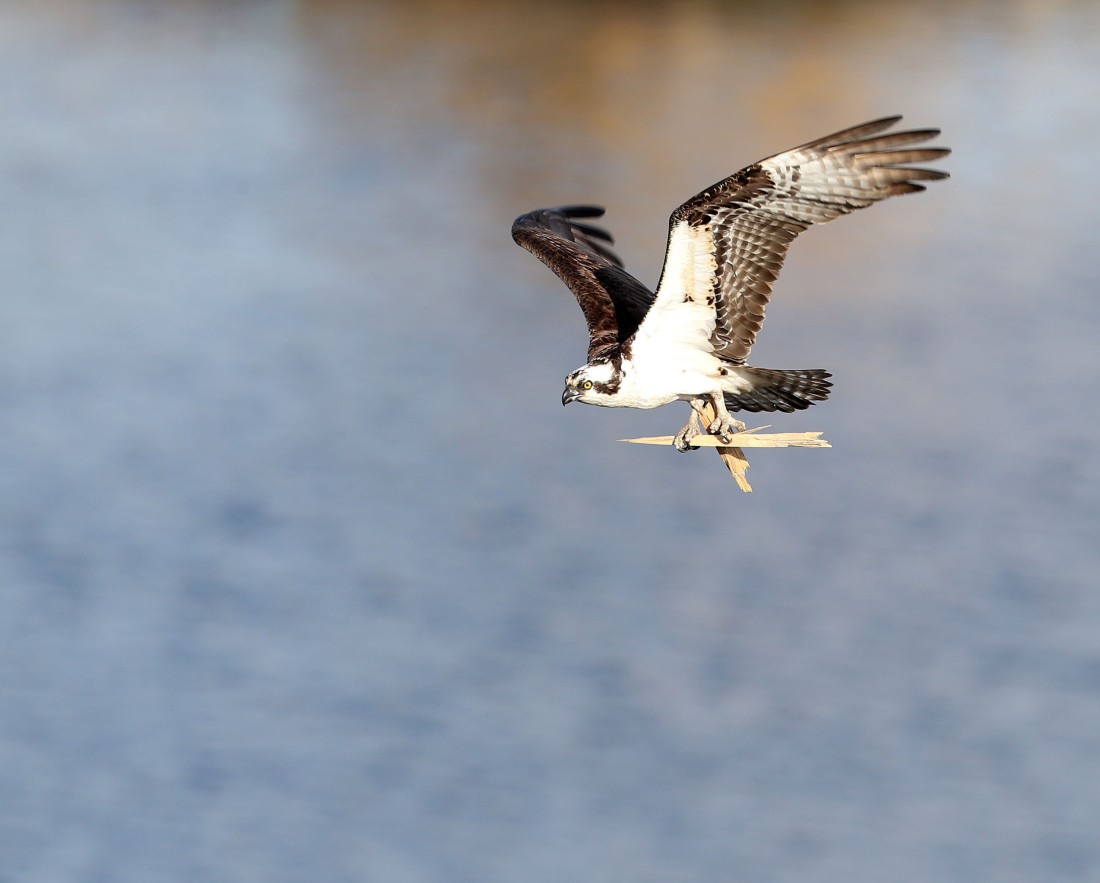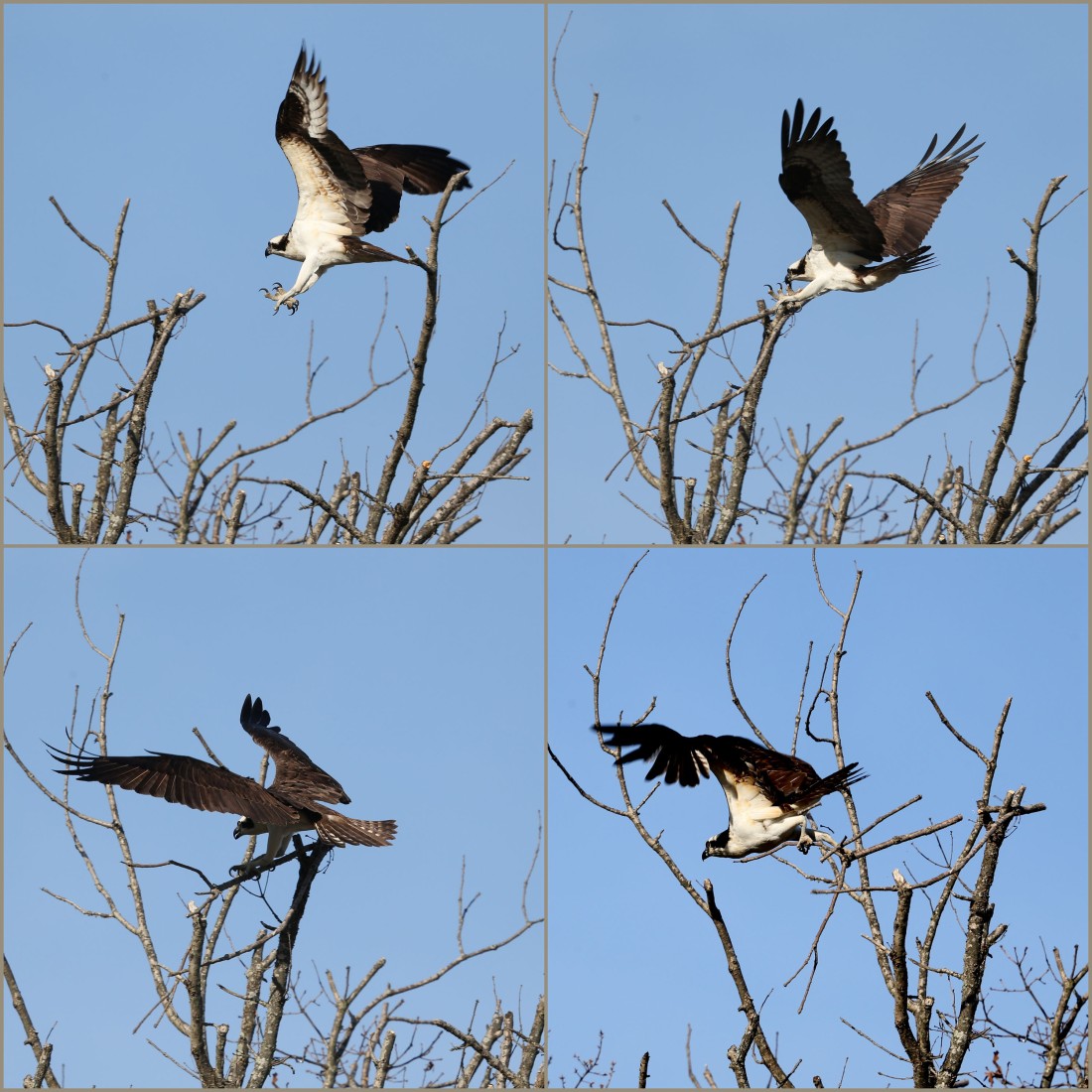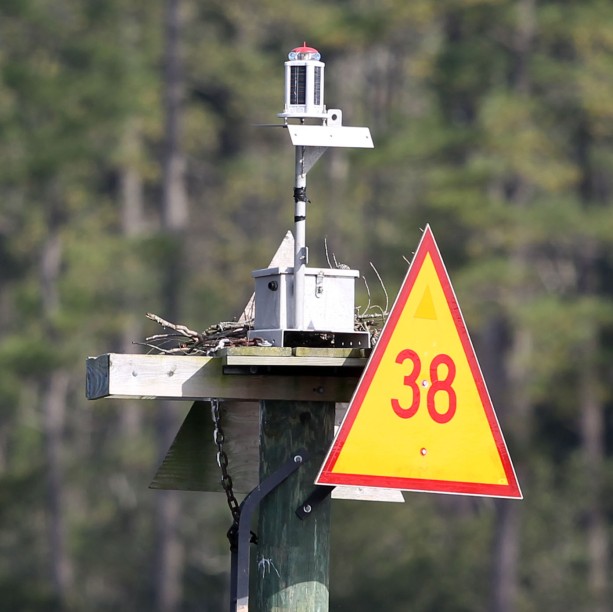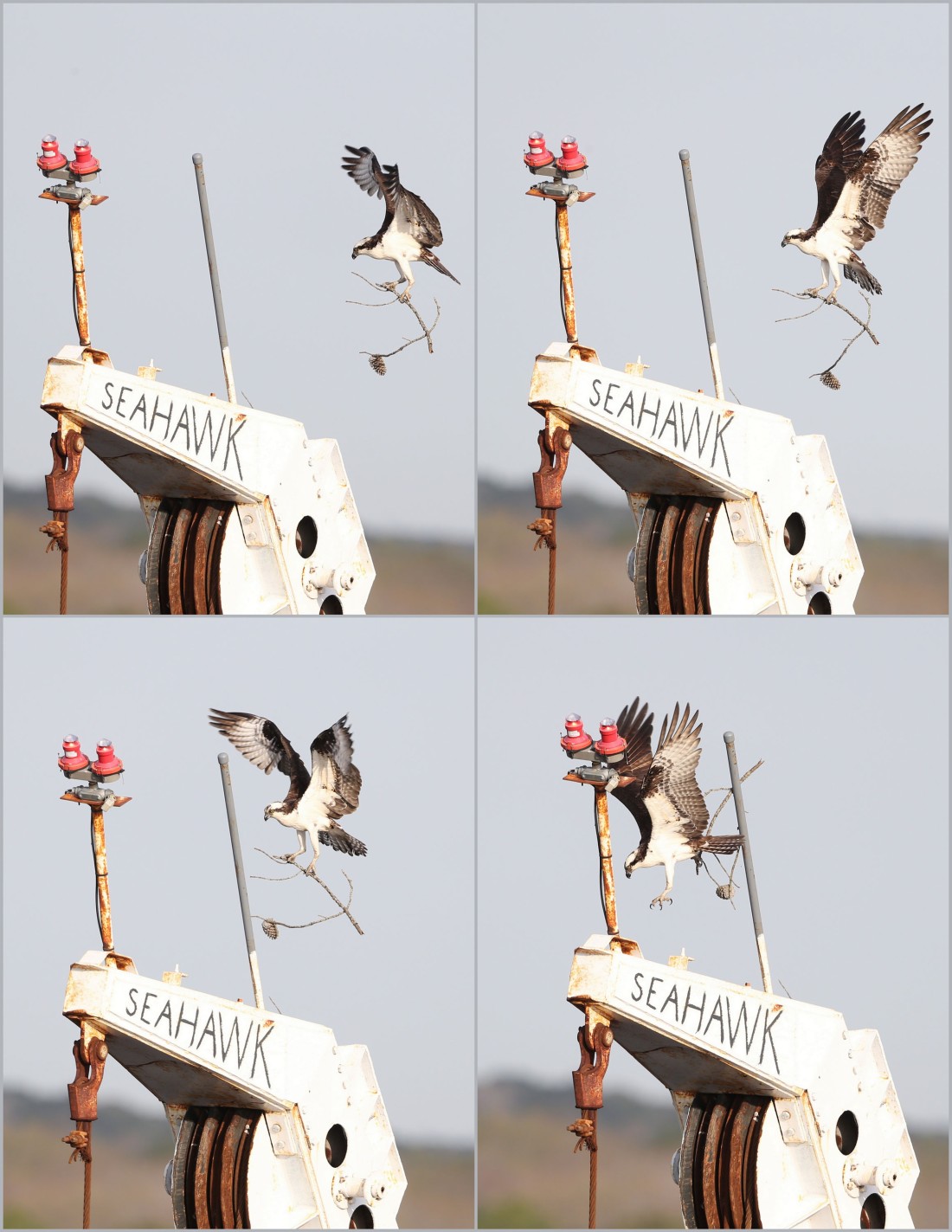Let me begin in the same way in which I ended “Osprey Country.” What a joy it is to blog and to share my thoughts and my photos with readers in this way. And let me continue by offering up a sincere and heartfelt “thank you” to those of you who have taken the time to send me your comments. I think of Lisa, a reader up in Massachusetts, who sent me this: “I have read your blog posts and really enjoyed them, your wit and humor and observations. Great photos also!” (I told her I wanted to mat and frame her comment. And maybe I will.) And I think of Marlene, a Virginia reader who sent me these kind words: “Very interesting and well written article, Dave! And, as always, love the photos—yours and the others.” Now, all those “Facebook effect” likes, thumbs up, and emojis are great. But nothing can take the place of a personal comment. And I am unanimous in that.
The Osprey’s Elite Status
I’m also unanimous in my regard for the Osprey’s elite status here in the Chesapeake Bay region and elsewhere. If birds are the most visible form of wildlife, and the Osprey, due to its size and growing numbers and its adaptability and tolerance of human activity, is the most visible form of bird, then this species is indeed something special. I’d go so far as to say that the Osprey is the ultimate object of study for anyone who’d like to learn about birds and wildlife.

Curriculum developers understand this, too, as the “highly visible” and accessible species has become a hot topic for study in countless school classrooms. Kids are learning about the life history of the Osprey (and going out in the field to do so) as a way to learn about, and make a connection with, the natural world. We might even call these “Osprey Studies” a gateway drug, of sorts. And growing numbers of adults, including this author, have become students of this species, as well. Speaking of gateway drugs, the Osprey, for some, was their “spark bird,” or the bird that got them hooked on the birdwatching hobby.
A (Very) Brief Look Back
I wrote in the last blog that I’ve spent countless hours with binoculars or camera or both in hand watching Ospreys and making mental notes—and sometimes written notes—about their behavior and that I’ve also learned about them while monitoring Osprey nests as an OspreyWatch participant. (I would encourage you to get involved with OspreyWatch). I then went on to discuss new learnings about their nest sites and nest building. Well, here are a couple of the highlights, with a few new discoveries mixed in.
Ospreys and Cranes
Ospreys seek out and nest on both inactive and active cranes. For example, here’s a breeding pair that began to build a nest on an inactive crane just north of the Veterans Memorial Bridge in Chesapeake, VA. (I gave the nest the nickname “Seahawk Crane” in OspreyWatch.) Note the pine cones in the photo; we’ll get back to them later.

And here is an Osprey couple that decided to build a nest atop an operational and as it turns out, active crane at the Norfolk Naval Shipyard in Portsmouth, VA. I watched this pair kick off the breeding season by engaging in a “cloacal kiss” there. What a sight to behold—and what a location. (That sight almost rivaled something I saw last year: an Osprey catching a ride on a container ship tower.) Of course, the official breeding-season kickoff took place earlier with the male Osprey performing his aerial sky dance.

I mentioned that this crane was active. A few weeks ago while I was watching the crane and watching the Ospreys bring their nesting material to that growing nest on top, and, thankfully, just beyond the reach of the pulley system, I was shocked as I watched the crane start to move! The birds weren’t around, but somehow they knew that something was amiss. So instead of returning to the nest, they took a detour and settled on a small light pole nearby—and waited.
But before too long, the two were back at it, resuming their delivery rhythm and adding more stuff to the nest, including the stick pictured below. In this case, unlike what I’d noted in my last blog, it was a simple “cash and carry” operation that didn’t involve any tearing. (It also wasn’t hit or miss, as attempts at tearing often are.) View left to right in the top row then left to right in the bottom. The approach that you see here, by the way, is the same approach that this raptor uses to seize fish: same flight pattern, same level of concentration, same exacting precision, and same all-out effort. (We would all approach things this way.)

Ospreys and Cones
You’ll note that this bird didn’t grab a stick with pine cones attached. But the Seahawk Crane Osprey above had taken a big stick that had quite a few. I’ve noticed that nest-building Ospreys grab sticks like that often. And I’ve also noticed that many Osprey nests, like the one pictured below, are interspersed with a number of these cones.

Incidentally, the “new construction” on this Elizabeth River channel marker platform (“Orange Channel Marker #38” in OspreyWatch) was likely the work of the Seahawk crane Osprey pair whose nest, not even a mile upriver, had failed. No doubt, they’d spotted this platform earlier while foraging in the area.
It’s interesting to note that below is how that channel marker looked on the same day I discovered that the Seahawk crane nest had been removed. (You can read the story behind that nest failure in “Osprey Country.”) The nesting platform was empty except for the remains of last year’s nest (from which 2 chicks had successfully fledged). Or—and this is certainly a possibility—those sticks could have been placed there by the new nesting pair.

A Few More Observations
Osprey Nests and Pine Cones
All of this leads me to several more observations. Ospreys seek out branch pieces with cones if they’re available. And I have a theory as to why. The cones help to hold together and stabilize their nests.
Nest Removal
I’ve also learned a few more things. I mentioned above that the Seahawk Crane nest had been removed. It was removed, and wires were stretched over the housing to prevent future access. The Buckeye crane nest was removed, as well. But in that case, the boom was raised to prevent future nesting attempts. The boom still remains in that position.
Now, some may wonder if removing those Osprey nests was permitted by law. As it turns out, it was, since neither of the nests had eggs. Osprey nests can be removed from equipment that is in use or might soon be in use or might never be in use, provided there are no eggs in the nest. And they can be removed at any time during the off-season. But if there are eggs in the nest, permission for removal must be obtained from the U.S. Department of Agriculture.
Nest Spacing
I’ve learned about nest spacing, as well. Ospreys will nest in close proximity to one another, provided there’s an adequate food supply. There are even managed nesting colonies in places like my native Massachusetts, where birds nest quite close together, and without conflict, on artificial structures.
Now, here’s a photo of what we could call an “unmanaged nesting colony,” where three breeding pairs built nests roughly 1/10 mile apart, on, from left to right, a channel marker, a construction crane, and a communication tower. This photo not only indicates that Osprey pairs will build nests close to one another, but it also points rather strongly to something I brought up earlier, that Ospreys are adaptable and tolerant of human activity. The channel marker and communication tower nests are still active. The Seahawk Crane nest in the middle is not.

Nest Failure
Lastly, I’ve learned something else. Nest failure is a common occurrence in Ospreys’ lives, in birds’ lives. But they appear to take it in stride and forge ahead despite the setbacks. (We would all approach failure the same way.)
The Tumble
We’ll wrap this up with another shot sequence, this time of an Osprey delivering a stick with—you guessed it—a pine cone attached. Once again, please view left to right in the top row, then left to right in the bottom. If I were to caption the last photo in the sequence, I’d call it: “The tumble.” I love how the bird comes in for a landing, stalls, and then appears to tumble forward, as if it hadn’t gauged its approach correctly. Of course, in all likelihood, the bird had gauged its approach perfectly.

Once again, note that the bird carried the stick in both talons. Ospreys carry nesting material and prey this way so that they can achieve steady and stable flight. Imagine if a heavy item were carried in one talon alone and how that might negatively affect proper weight distribution and balance, so essential for flight. Also, note again that the Osprey, as it descended, transferred that stick—with pine cone attached— from both talons to just one, to ensure it would land safely (and succeed in delivering the goods).
A Brief Endnote
I’ll leave you with this (and now we’ll REALLY wrap things up). This is a close-up of the Osprey that was featured in the second photo. I was almost eyeball to eyeball with the bird as I watched it from the top of the bridge.

This Osprey nest, of course, is no longer there. Folks can no longer shoot the Osprey pair from atop the Veterans Memorial Bridge in Chesapeake. Here’s how that nest site looks now.

But opportunities to take close-ups of Ospreys exist in other places. Just the other day, for example, my wife and I spotted an Osprey nest just south of the Cypress St. Bridge in Smithfield. The nest and the birds were almost at the same height as the bridge’s roadway. Now, given that the hatchlings are due to arrive soon, this could be a good spot from which to capture some interesting post-birth activity. But if you visit, exercise caution, and please be considerate of this Osprey family.

Thanks for the awesome pictures!
LikeLike
Kathleen, My pleasure. Thanks so much for both taking the time to read and to comment.
LikeLike
Good follow-up. I’m really enjoying your posts.
LikeLike
Thanks so much, Mike. Glad you’re enjoying them, and please spread the word!
LikeLike